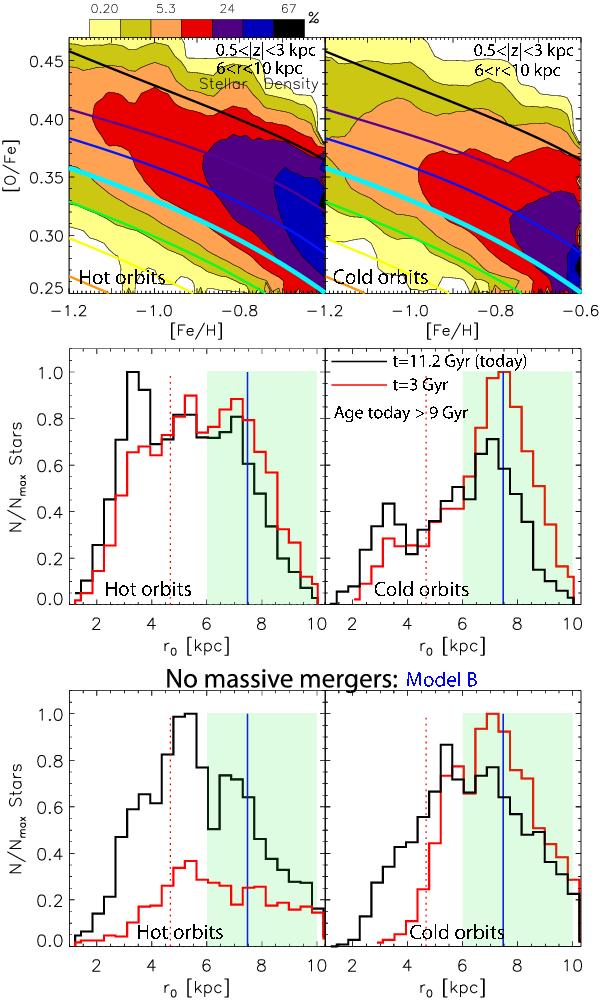Fig. 15

Top row: [Fe/H]–[O/Fe] stellar density distributions for metal-poor high-[O/Fe] stars ending up in the cylinder 6 < r < 10 kpc, 0.5 < |z| < 3 kpc (similar to SEGUE coverage). Stars are separated into a cold and a hot sample (by a cut in eccentricity at 0.2) with corresponding radial velocity dispersions σr ≈ 28 and σr ≈ 76 km s-1. Overlaid curves show the input chemistry for different radii as in Fig. 4. Middle row: birth-radius distributions at the final time (black) and at 3 Gyr after the disk starts forming (red) for the selections in the first row. The green strip indicates the radial range at the final time, the dotted-red and solid-blue vertical lines show the bar’s CR and OLR positions at the final time. Most stars are in place at the end of the early-on merger phase, with a large fraction born near and outside the solar radius. Bottom row: same as the middle row, but for a model avoiding mergers at high redshift (Appendix A). Migration is not as effective at early times (red line), although orbits are less eccentric and the bar is stronger. The fraction of cold to hot orbits is 0.96 instead of 0.33.
Current usage metrics show cumulative count of Article Views (full-text article views including HTML views, PDF and ePub downloads, according to the available data) and Abstracts Views on Vision4Press platform.
Data correspond to usage on the plateform after 2015. The current usage metrics is available 48-96 hours after online publication and is updated daily on week days.
Initial download of the metrics may take a while.


